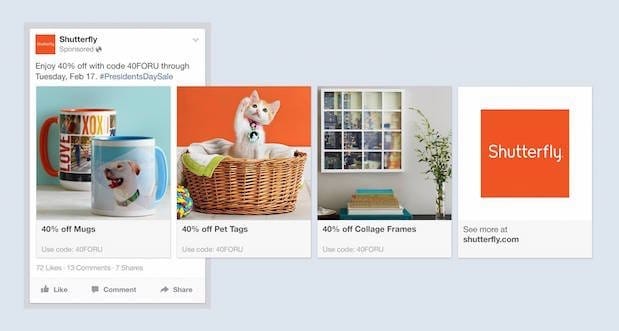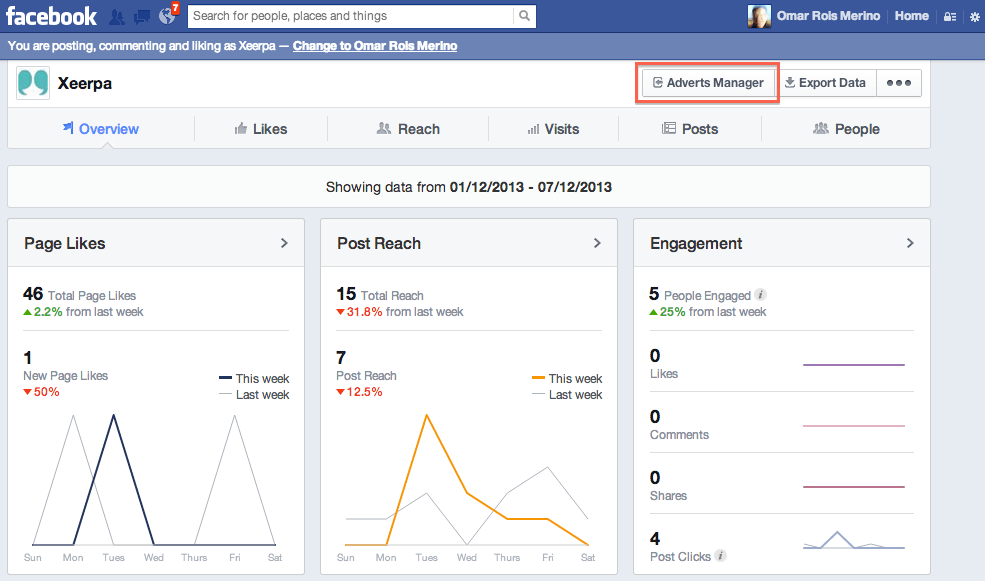 Written by ContentPowered.com
Written by ContentPowered.com
Facebook may be typically known for its socially communicative benefits and massive audience, but it’s also a good place to sell your products. Oh, you can’t use advertising in the organic news feed; Facebook is cracking down on that. You can run ads, though, specifically product ads. There are some great features only available in product ads, so let’s dig right in.
New Dynamics
Early this February, Facebook announced new dynamic versions of their product ads. These are actually super exciting, for a number of reasons. They’re specifically designed to use the normal amount of available ad space to showcase more products than are typically shown.
One of the great benefits of the new dynamic ads is the ability to upload your entire product catalog. Everything you sell, accessible in Facebook’s ads manager. No need to go through and manually find the product images, descriptions and prices you want to showcase every single time.
With your entire catalog uploaded, you can set Facebook to determine which products are the most relevant for a given user. How effective is this feature? I have no idea! It’s new, so you’re going to have to test it out yourself.
Instead of letting Facebook choose the products for each user, you can also set aside certain subsets of products for certain audiences. Say you’ve been using the Facebook tracking pixel on a given product page. You can track anyone who visits that page – thus anyone interested in that product – and build a custom audience out of those users. You can then create custom ads with dynamic product selection involving that product, to target that custom audience.
You can, of course, change this up in a number of ways. Swap out the products for different audiences. Use single-product ads instead of multi-product ads. Show different sets of products for different people, including either side of the mobile-desktop split.
Ad Units
You can run either single product or multiple product ads as single ad units. This means that in the space of one ad, you can showcase several products. This sort of multi-product ad has existed for the better part of a year, but the new dynamic additions make it more valuable.
When you run a multi-product ad, the products show up on a carousel. One takes up most of the space, with the edge of a second just barely visible. These rotate or can be swiped back and forth, for mobile users.
Ad Templates
Perhaps the best feature of the new dynamic ads is the ability to create a dynamic ad template. You create the basic format of the ad, including the URL and targeting, then you use Facebook’s ability to view your product catalog to fill in the actual products. You can do this manually, or you can tell Facebook to pick the best products based on the keywords you’re using for your ads.
One benefit of dynamic product information queries is that Facebook will know, automatically, when one of your products runs out of stock or is discontinued. Facebook will stop running that product in the ad product selection and will replace it with a different product when possible. If the original product is restocked, it will return to rotation.
Templates work for both the news feed and the sidebar, on both desktop and mobile. You can create one single ad that works on all four setups, or you can limit the ads and create templates for each setup you want to target individually. It’s all very flexible.
Custom Audience Dynamics
Along with the update that ads these dynamic ads, Facebook is also expanding their custom audience targeting. This gives you more versatility with these product ads than you’ve had in the past. What has changed?
- You can now access the recent purchasing behavior of your followers or your custom audiences. This includes information about the types of products a user has been browsing for recently. A user posts about wanting a new headset, and suddenly headset manufacturers are targeting them with their ads.
- You can target only the most engaged and most interested of the people who have visited your site. In addition to the standard custom audiences, you can target specifically people who have visited your site within a certain time frame. This includes, for example, “people who haven’t visited for a while” but are still following your page. Remind them you exist and what you have for sale.
- You can target people who have visited certain pages, but you can also remove them from targeting if they visit other pages. A simple example of this would be if they have visited one product page, target them. If they visit the checkout page after that product page, remove them from the list. You can also target users who have visited the page for your high-end services, but remove them from the targeting list if they then go on to view the lower-end services – making the reasonable assumption that they don’t have the budget for your high-end service.
You can also build specific custom audiences for individual products. A single audience made up of people who have all been interested in one specific product? What else could you want?
Pixel Power
This one is just a side note; you don’t have to add more code to your website to track all of this. The Facebook Pixel that you already have installed is the same code that works for all of these new ad features.
Working Differently
Facebook’s new dynamic ads seem like they work the same way as Google product ads, but really they’re a lot more similar to Google Remarketing. The main power from them comes from the pixel tracking and data that Facebook harvests.
They also aren’t part of the Facebook Exchange. They are ads with much more versatility and more exposure than what you find through the exchange.
